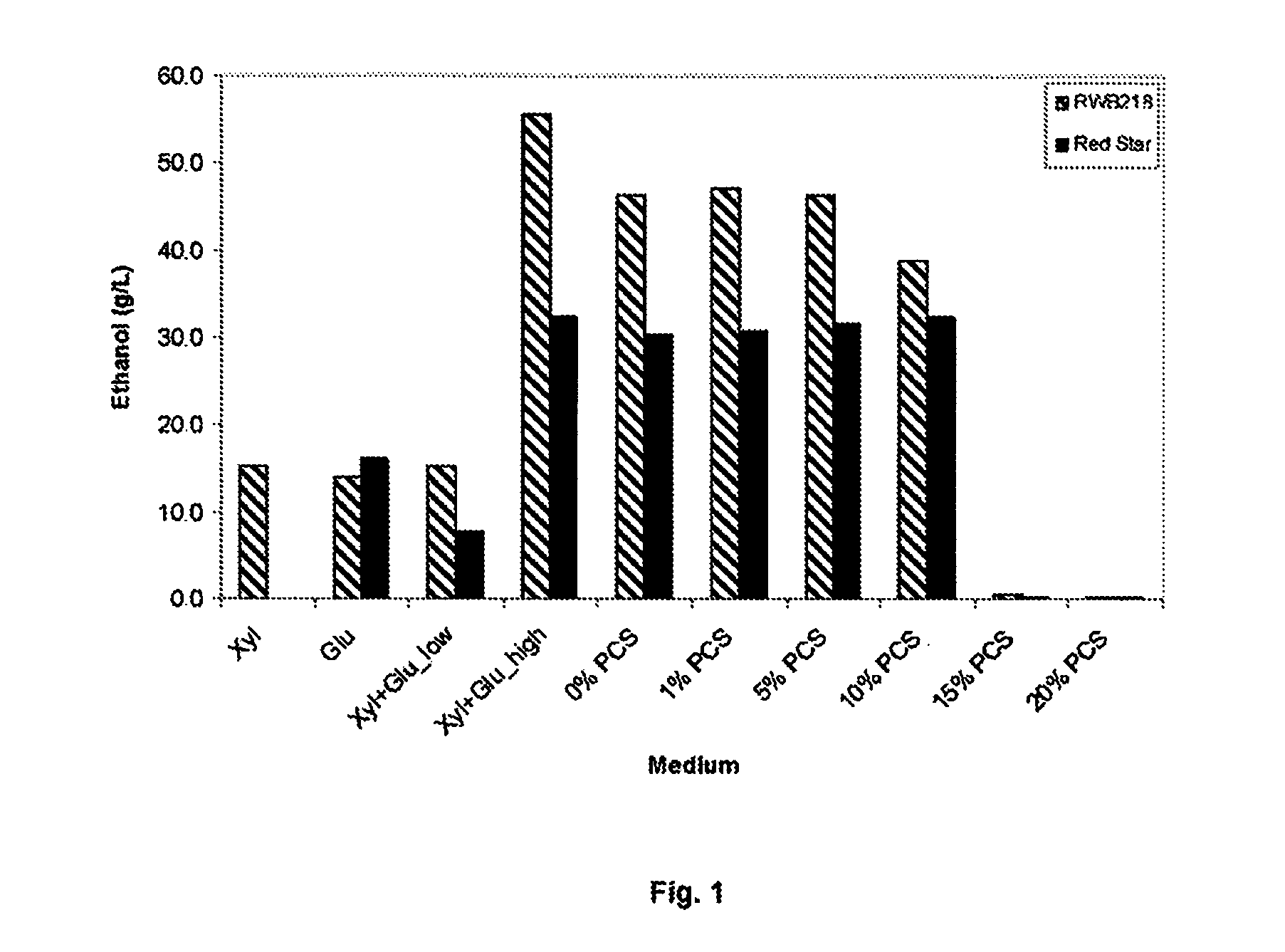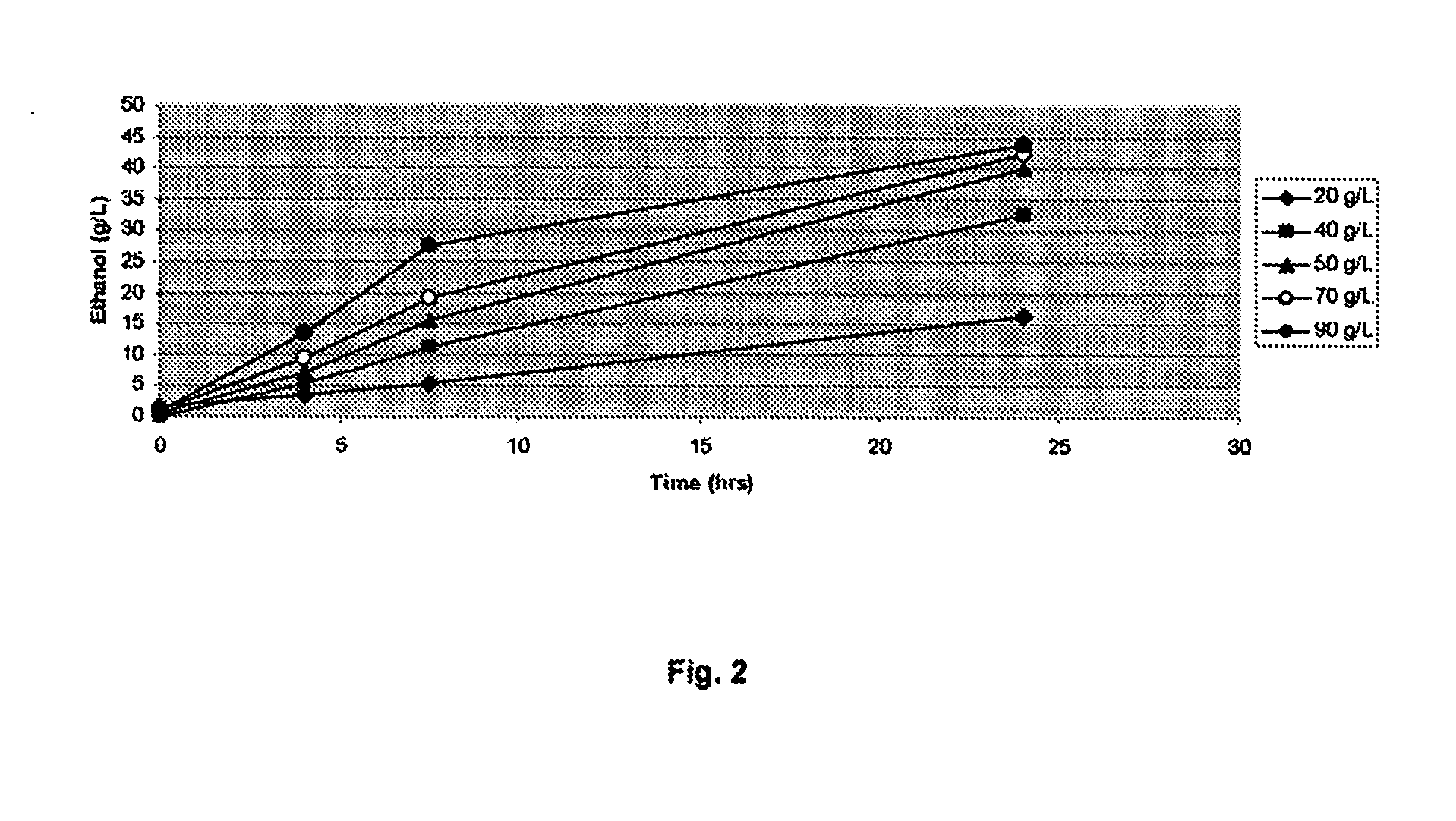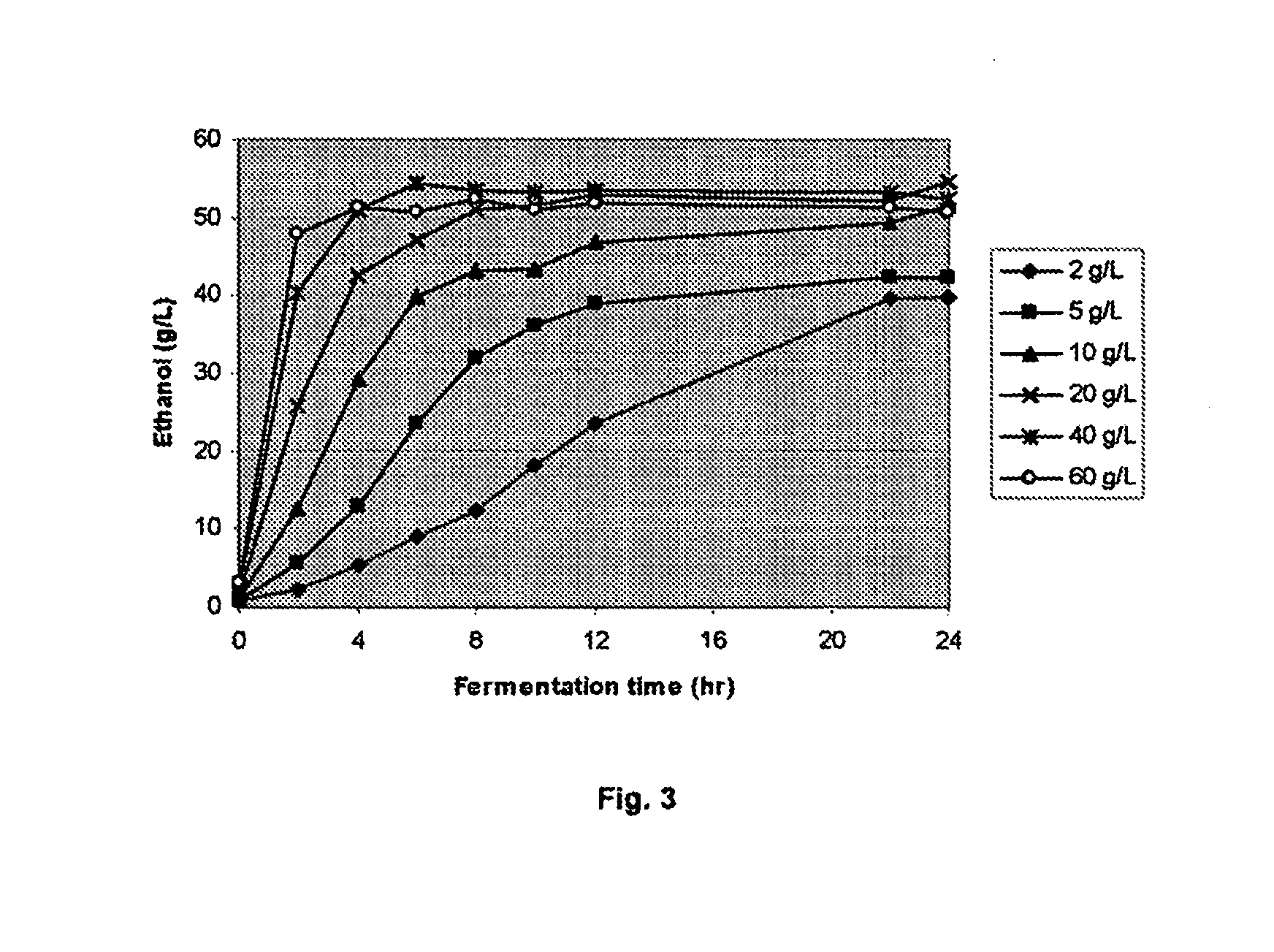Methods for producing fermentation products
a technology of fermentation products and methods, applied in the direction of fermentation, biofuels, etc., can solve the problems of difficult hydrolyzate removal, time-consuming and expensive, and time-consuming in each cycl
- Summary
- Abstract
- Description
- Claims
- Application Information
AI Technical Summary
Benefits of technology
Problems solved by technology
Method used
Image
Examples
example 1
High Cell Count Ethanol Production
[0252]The effect of high yeast pitch (cell count) and cell recycling on ethanol production was tested by inoculating filtered, pre-treated corn stover (PCS) enzyme hydrolyzate at various initial yeast cell concentrations. At 24 and 48 hours after the start of the fermentation, cells were recycled by centrifugation, spent hydrolyzate was removed and fresh hydrolyzate was added.
Method:
[0253]Unwashed PCS (acid-catalyzed, steam-exploded, The National Renewable Energy Laboratory, Golden, Colo.), was hydrolyzed for 72 hours at 50° C. using an initial insoluble solids concentration of 20% (w / w) and 10 mg of Cellulase preparation A per g of cellulose. After hydrolysis, the slurry was centrifuged for 10 minutes at 3000 rpm, and the supernatant was collected by filtration using a 0.45 micron Whatman filter.
[0254]Into the wells of a 24-well cell culture plate (Whatman International Ltd., Florham Park, N.J.) varying amounts of RED STAR™ yeast were added ranging...
example 2
Low Cell Count Ethanol Production
[0255]The effect of various amounts of sugar solutions and filtered, pre-treated corn stover (PCS) enzyme hydrolyzate on batch fermentation ethanol production in different yeast strains was tested. The results are summarized in FIG. 1.
Method:
[0256]Ten different media were batch fermented to produce ethanol by RED STAR™ yeast and RWB218 (Nedalco). Mediums 1 to 5 were glucose and xylose solutions supplemented with 0.5% (w / v) yeast extract and 1% (w / v) peptone. Mediums 6 to 10 were filtered unwashed pretreated corn stover (fuwPCS) enzyme hydrolyzate with different levels of total solids. Sugar level of Mediums 5 to 9 was adjusted to make xylose and glucose concentration equivalent to that found in 20% total solids of fuwPCS hydrolyzate to test the resistance of the strains towards different level of inhibitions. All media were filter sterilized.
[0257]Medium 1: Xylose only at 40 g / L
[0258]Medium 2: Glucose only at 40 g / L
[0259]Medium 3: Xylose 20 g / L and G...
example 3
High Cell Count Ethanol Production
[0268]The effect of high RED START™ yeast pitch (cell count) on batch fermentation ethanol production was tested by inoculating filtered, pre-treated corn stover (PCS) enzyme hydrolyzate at various initial yeast cell concentrations. The results are summarized in FIG. 2.
Method:
[0269]Unwashed PCS (acid-catalyzed, pretreated corn stover from National Renewable Energy Laboratory, Golden, Colo.), was hydrolyzed for 120 hours at 50° C., pH 5.0 using an initial solids concentration of 20% (w / w) and 50 mg of Cellulase preparation A per g of cellulose. After hydrolysis, the slurry was centrifuged for 10 minutes at 3000 rpm using a Beckman-Coulter table top centrifuge to separate the solids. The resulting liquid hydrolyzate was supplemented with nutrients: yeast extract and peptone at 5 g / L levels each and fermented using a shaker incubator at 150 rpm for 24 hrs at a temperature of 32° C. and pH 5.0 in a 250 mL nalgene bottle with a 150 mL working volume by v...
PUM
 Login to View More
Login to View More Abstract
Description
Claims
Application Information
 Login to View More
Login to View More - R&D
- Intellectual Property
- Life Sciences
- Materials
- Tech Scout
- Unparalleled Data Quality
- Higher Quality Content
- 60% Fewer Hallucinations
Browse by: Latest US Patents, China's latest patents, Technical Efficacy Thesaurus, Application Domain, Technology Topic, Popular Technical Reports.
© 2025 PatSnap. All rights reserved.Legal|Privacy policy|Modern Slavery Act Transparency Statement|Sitemap|About US| Contact US: help@patsnap.com



